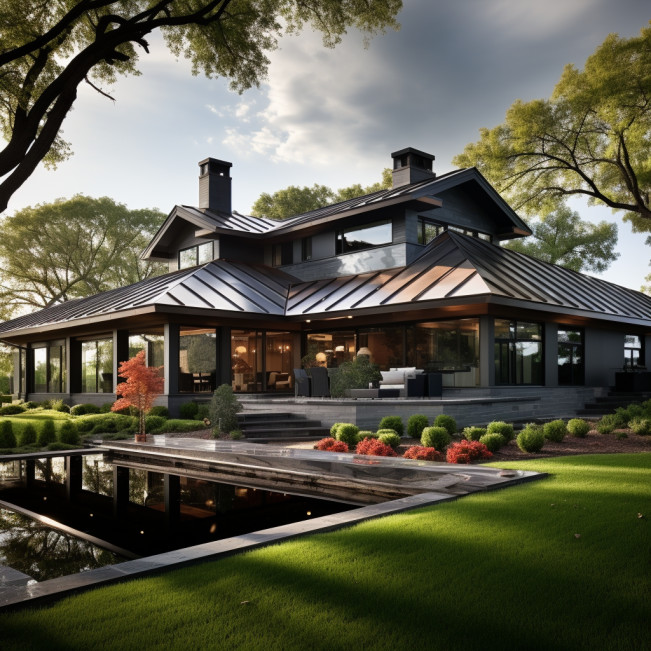
In this article, we delve into the realm of green building techniques and explore five game-changing strategies that custom home builders can employ.
With a focus on energy efficiency and sustainability, these strategies pave the way for a greener future.
From choosing eco-friendly materials to implementing innovative methods, custom home builders can make significant contributions towards creating energy-efficient and environmentally-conscious homes.
Join us as we uncover the key techniques that every professional in the industry should know.
Table of Contents
Achieving Energy Efficiency in Custom Home Construction
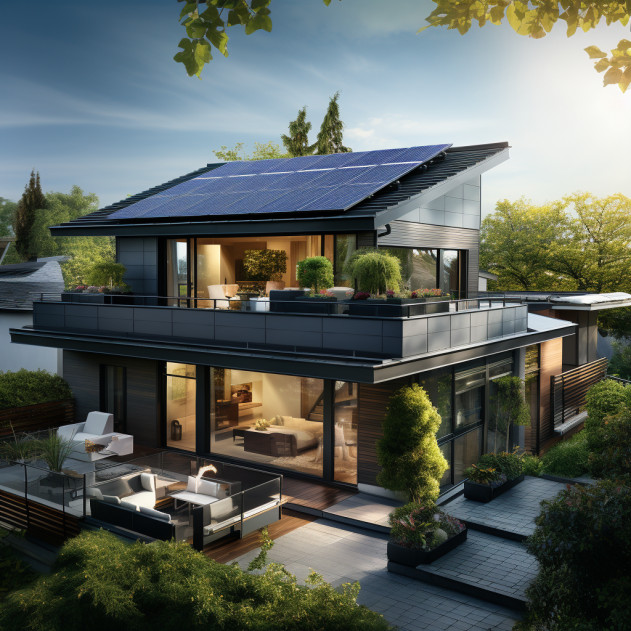
To achieve energy efficiency in custom home construction, custom home builders must implement innovative strategies and technologies. By incorporating energy-efficient and green building methods, such as using sustainable building materials and reducing energy consumption, builders can create homes that are not only environmentally friendly but also cost-effective for homeowners in the long run.
One crucial strategy is the use of a cool roof, which reflects sunlight and reduces the amount of heat absorbed by the building, leading to lower energy consumption for cooling.
Energy-efficient appliances and the incorporation of recycled materials further contribute to reducing energy consumption and promoting indoor environmental quality.
The Key to Sustainability: Green Building Methods
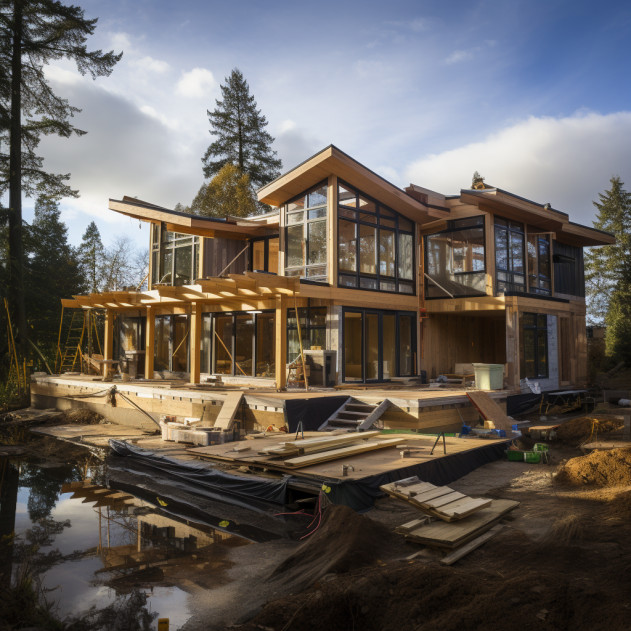
Green building methods are consistently employed by custom home builders to ensure sustainability in construction projects. These methods focus on creating green buildings that are energy efficient, environmentally friendly, and promote sustainable construction.
One of the key aspects of green building methods is the use of green technology, such as green insulation and passive solar design, to reduce energy consumption and maximize natural resources.
Additionally, the choice of building materials plays a crucial role in creating sustainable structures. Custom home builders often opt for materials that are eco-friendly, durable, and sourced from renewable sources.
Green Building Techniques: Paving the Way for a Greener Future
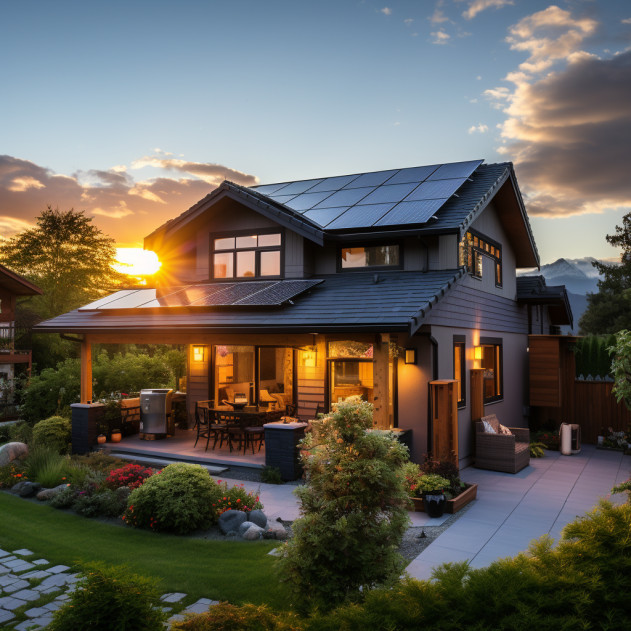
Implementing sustainable construction practices is essential for custom home builders to pave the way for a greener future. By incorporating green building techniques, such as using energy star appliances and solar power, builders can contribute to a more environmentally friendly approach.
The green building council and the environmental protection agency are valuable resources for custom home builders looking to incorporate sustainable practices. One strategy is to create a tight building envelope, which reduces energy loss and lowers energy bills.
Another technique is the installation of solar panels, which harness the power of the sun to generate electricity. Additionally, selecting eco-friendly building materials not only promotes sustainability but also helps in saving money in the long run.
5 Game-Changing Green Building Techniques Every Custom Home Builder Should Know
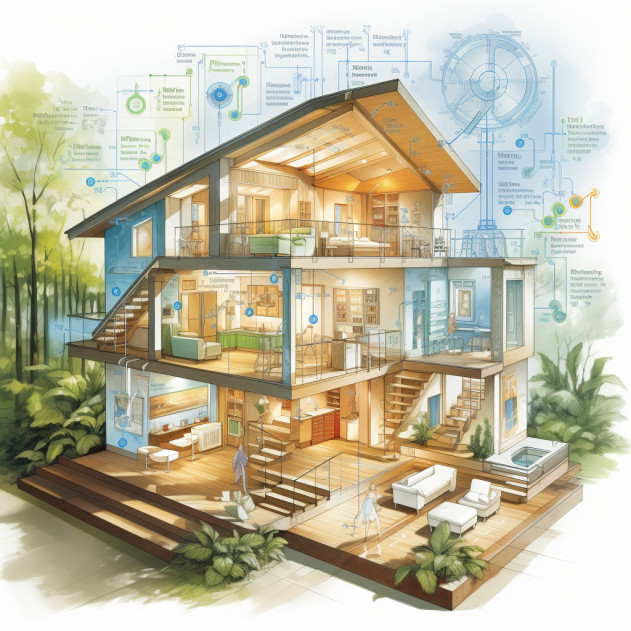
Green building techniques have become increasingly important in the construction industry as the world focuses on sustainability and environmental conservation. Custom home builders, in particular, should be well-versed in these techniques to meet the growing demand for eco-friendly homes. Here are five game-changing green building techniques that every custom home builder should know:
Passive Solar Design:
Passive solar design is an essential technique for maximizing energy efficiency in a custom home. It involves positioning the home to take advantage of natural sunlight and heat, reducing the need for artificial lighting and heating. Key elements include proper orientation, strategic window placement, and thermal mass materials that store and release heat. This technique not only reduces energy consumption but also enhances indoor comfort.
High-Performance Insulation:
A well-insulated home is crucial for energy efficiency. Custom home builders should prioritize high-performance insulation materials like spray foam, cellulose, or insulated concrete forms (ICFs). These materials create a tight building envelope, preventing heat loss in the winter and heat gain in the summer. Proper insulation can significantly reduce heating and cooling costs.
Sustainable Building Materials:
Using sustainable building materials is a cornerstone of green construction. Custom home builders should choose eco-friendly materials like reclaimed wood, recycled metal, low-VOC (volatile organic compounds) paint, and sustainable flooring options such as bamboo or cork. These materials are not only environmentally friendly but also healthier for occupants due to reduced off-gassing of harmful chemicals.
Energy-Efficient HVAC Systems:
Installing energy-efficient heating, ventilation, and air conditioning (HVAC) systems is vital for reducing a home’s energy consumption. Custom home builders should consider options like heat pumps, geothermal systems, or solar-powered water heaters. Smart thermostats and zoned HVAC systems further enhance energy efficiency by optimizing temperature control.
Rainwater Harvesting and Greywater Recycling:
Custom home builders can implement rainwater harvesting and greywater recycling systems to reduce water consumption. Rainwater harvesting involves collecting rainwater from roofs and storing it for non-potable uses such as landscape irrigation. Greywater recycling treats and filters wastewater from showers and sinks, making it suitable for flushing toilets or irrigating gardens. These systems can significantly reduce water bills and the strain on local water supplies.
Incorporating these green building techniques into custom home construction not only benefits the environment but also enhances a home’s long-term value and livability. As sustainability becomes a more significant factor in real estate, custom home builders who embrace these practices will be well-positioned in the market and contribute to a more eco-conscious future.
Choosing Sustainable Building Materials for Eco-Friendly Homes
One crucial aspect to consider when aiming to construct eco-friendly homes is the careful selection of sustainable building materials. By choosing the right materials, builders can reduce the negative impact on the environment and create homes that are energy-efficient and environmentally friendly.
Here are three key sustainable building materials that can make a significant difference:
Recycled products: By using materials made from recycled products, builders can reduce the amount of landfill waste and minimize the extraction of raw materials.
Programmable thermostat: Installing a programmable thermostat allows homeowners to regulate the temperature in their homes and reduce excess energy consumption.
Electrochromic glass: This type of glass can automatically adjust its tint to control the amount of sunlight entering a building, helping to optimize natural lighting and reduce the need for artificial lighting.
Reducing Energy Consumption: A Vital Aspect of Green Building
To ensure environmentally responsible construction, custom home builders must prioritize reducing energy consumption as a vital aspect of green building. Implementing green building techniques and game-changing strategies can significantly reduce energy usage in a custom home.
One of the most effective ways to achieve this is by optimizing the design and construction process to enhance the energy efficiency of the building. This includes using insulation, high-performance windows, and sealing air leaks to minimize heat loss during the heating and cooling process.
The Benefits of Energy-Efficient Custom Home Design
Energy-efficient custom home design offers numerous advantages for both homeowners and the environment, making it a highly desirable choice in sustainable construction. With technological advancements and a focus on environmentally friendly building methods, energy-efficient homes are becoming increasingly popular.
Here are three key benefits of energy-efficient custom home design:
Reduced energy consumption: Energy-efficient homes are designed to maximize the use of natural resources, such as the sun’s energy, to heat and cool the home. This reduces the reliance on artificial heating and cooling systems, resulting in lower energy bills and a smaller carbon footprint.
Enhanced comfort: Energy-efficient homes are designed to maintain a comfortable temperature throughout the year, regardless of the local climate. By effectively insulating the home and minimizing air leakage, warm air is trapped in cold weather, and cool air is retained in hot weather, ensuring a comfortable living environment.
Environmental protection: Energy-efficient homes significantly reduce greenhouse gas emissions and contribute to a healthier environment. By using less energy, these homes help to conserve natural resources and lower the overall impact on the environment.
Innovative Green Building Methods: Trends and Strategies
Continuing the exploration of sustainable construction, custom home builders are embracing innovative green building methods to enhance energy efficiency and reduce environmental impact. These methods focus on reducing the amount of heat transferred into and out of buildings, maximizing the use of sunlight, managing water runoff, and utilizing new advances in materials and technology.
By implementing strategies that minimize heat loss and gain, such as improved insulation and high-performance windows, custom homes can significantly reduce their energy consumption for heating and cooling. Additionally, incorporating passive solar design techniques, such as orienting the building to capture more sunlight, can further enhance energy efficiency.
Managing water runoff through the use of permeable surfaces and rainwater harvesting systems helps reduce strain on local water resources.
With the constant development of new materials and technology, custom home builders have an opportunity to create more environmentally friendly and energy-efficient homes.
Sustainable Building Materials: Prioritizing Eco-Conscious Choices
Custom home builders are prioritizing eco-conscious choices when it comes to sustainable building materials. With the growing awareness of climate change and the need to reduce our carbon footprint, builders are seeking out materials that are environmentally friendly and have a minimal impact on the planet.
Here are three key considerations when it comes to selecting sustainable building materials:
Energy efficiency: Builders are opting for materials that help reduce energy consumption, such as using energy-efficient windows and insulation to maximize thermal performance. This not only lowers the power consumption of the home but also reduces utility bills and carbon emissions.
Recycled and renewable resources: Sustainable builders use materials made from recycled or renewable resources, such as reclaimed wood or bamboo flooring. These materials reduce the demand for new resources and promote the circular economy.
Longevity and durability: Choosing materials that have a long lifespan and require minimal maintenance is crucial. This minimizes the need for replacements and reduces waste in the long run, extending the life of the building and its infrastructure.
Energy-Efficient Home Construction: A Step Towards Sustainability
With a focus on sustainability, custom home builders are embracing energy-conscious construction methods as a pivotal step towards creating more environmentally friendly homes. Energy-efficient home construction involves designing and constructing homes that minimize energy consumption while maximizing efficiency.
This can be achieved through various strategies, such as incorporating proper insulation, installing energy-efficient appliances, and utilizing renewable energy sources. By reducing energy consumption, homeowners can not only decrease their carbon footprint but also save on energy costs in the long run.
Additionally, energy-efficient homes contribute to a healthier indoor environment by ensuring proper ventilation and minimizing the use of harmful chemicals. As the demand for sustainable homes continues to grow, custom home builders play a vital role in promoting energy-efficient construction practices and helping homeowners achieve their sustainability goals.
Frequently Asked Questions
What Are Some Common Challenges Faced by Custom Home Builders When It Comes to Achieving Energy Efficiency?
Achieving energy efficiency in custom home building can present various challenges. From selecting the right materials and technologies to ensuring proper insulation and ventilation, builders must navigate complex decisions to create sustainable and energy-efficient homes.
How Can Green Building Methods Benefit Both the Environment and the Homeowners?
Green building methods can benefit both the environment and homeowners by reducing energy consumption, improving indoor air quality, and promoting sustainability. These strategies enhance the efficiency and performance of homes while minimizing their impact on the planet.
What Are Some Examples of Innovative Green Building Techniques That Can Significantly Impact Energy Efficiency in Custom Home Construction?
Innovative green building techniques that significantly impact energy efficiency in custom home construction include passive solar design, high-performance insulation, efficient HVAC systems, smart home technology, and renewable energy integration.
What Factors Should Custom Home Builders Consider When Selecting Sustainable Building Materials for Eco-Friendly Homes?
When selecting sustainable building materials for eco-friendly homes, custom home builders should consider factors such as the materials’ durability, energy efficiency, renewable sourcing, and the overall environmental impact throughout their lifecycle.
Are There Any Government Incentives or Programs Available to Support Energy-Efficient Home Construction?
There are several government incentives and programs available to support energy-efficient home construction. These include tax credits for installing renewable energy systems, grants for energy-efficient upgrades, and loan programs with favorable terms for green building projects.
Conclusion
In conclusion, incorporating green building techniques in custom home construction is essential for achieving energy efficiency and sustainability.
By choosing sustainable building materials and implementing innovative methods, custom home builders can contribute to a greener future.
Energy-efficient home design not only benefits the environment but also offers numerous advantages for homeowners.
Prioritizing eco-conscious choices and embracing trends in sustainable construction are crucial steps towards creating a more sustainable and environmentally friendly built environment.
